Let's be real: Calling our first Top 25 "Way Too Early" is a massive understatement. It's fun, sure. Hopefully informative, too. But with a spring full of draft decisions, transfers and coaching changes still to come, that very first view of the upcoming season is always incredibly hazy. If there is literal confetti in the literal air, it's probably a little too early.
Even a month later, after the draftees have declared, can be tricky. A prominent coach might still take his stylistically distinct talents to the NBA. A graduate transfer might still be weighing his options. A recruit might be wavering, or reclassifying and arriving a year earlier than expected. May is way too early, too.
August, though? August is great. August has all of those uncertainties in the rear view. August has seen the stories come and go. August knows what each team's roster will look like, coaches on down. August is less than 100 days from the start of the season, and what used to be a guess -- like, say, how wide open the 2015-16 title chase will be -- is now a fully codified consensus. (The answer? Very much so.)
In other words, it is no longer too early. Let's call this the "Slightly Modified, Slightly More-Informed, No-Longer-Way-Too-Early 2015-16 Top 25." Catchy, right?
No-Longer-Way-Too-Early Top 25
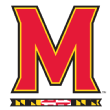
It's fitting, then, that this edition crown a new ... what's that, Maryland fans? You need a moment? Aw. That's OK. Go on. Let it all out.
Can you blame them? It's been a strange few years. We are, after all, just four years removed from the retirement of beloved legend Gary Williams. The 2013-14 season -- when Maryland went 17-15 -- wasn't so long ago. A summer ago, coach Mark Turgeon waved farewell to five mostly significant players, and spent most of his time answering questions about where the program could possibly go from there. And now they're No. 1. If you were a Terps fan, you'd be smile-crying, too.
Whether or not you agree with the ranking -- that low rumble in the distance is 10,000 North Carolina fans preparing their emails about the details of Marcus Paige's injury history -- you can't argue that, after 2014-15's breakout, we can all agree the Terps look even better than they did in May. With player-of-the-year-candidate point guard Melo Trimble, stretch forward Jake Layman, blue-chip center Diamond Stone, transfer Robert Carter and a handful of quality role players (namely Jared Nickens) in a finely balanced mix, Turgeon's was always an obvious top-five team. Then, on May 11, Rasheed Sulaimon announced he would play his final season of college basketball in College Park. Sulaimon's production at Duke petered out before Mike Krzyzewski made him the first player in a 1,000-win tenure to be officially dismissed, but he is a legitimate 3-point threat and off-ball scorer who could be devastating playing alongside Trimble and a lineup with the highest ceiling, and best balance of skills, in the sport.
Which means Maryland fans, who have gone from 17-15 and five transfers to title contention in 18 months, will spend the 2015-16 season cheering for a player who spent the first three years of his career at Duke. Come on, that's got to feel weird.
For more on how the Terrapins will look this season, check out Maryland's Summer Recruiting Bible![]() .
.

That said, Maryland is not an obvious favorite. None of the top, oh, seven teams on this list is obviously better than the other. UNC seems to be the most common pick, for obvious reasons: This is a team with (almost) its entire roster intact. That is the Tar Heels' chief appeal and the best reason to question their national title aspirations, all at the same time.
The bullish folks cite North Carolina's experience, cohesion and depth, which are rare qualities for a roster this talented. They argue that rising star sophomore Justin Jackson was already really good and is going to get better as his shooting improves. They're probably right. They argue that Paige was also already really good and is going to get better, even as a senior, because he'll finally be healthy. They're probably right. That's before you get into the emergence of sophomores Theo Pinson and Joel Berry II, as well as the solidity and continuity in Roy Williams' frontcourt.
This isn't just a reflex. These are good reasons, and if they're true, UNC is the favorite. But if they're not -- if Paige gets banged up again or Jackson slumps or everyone is basically what they were a year ago, give or take -- then you're pinning the favorite tag on a 12-loss team with the ACC's eighth-best per-possession defense. That's a tough one.
For more on how the Tar Heels will look this season, check out UNC's Summer Recruiting Bible![]() .
.
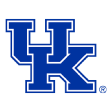
Our previous No. 1 earned that status largely through deference. The Wildcats have come to operate on an altered time-space continuum under coach John Calipari; when they lose talent to the NBA, they usually replace it, and fast. It was reasonable to assume the same would happen this spring. And it did, to a certain extent: UK already had the No. 1 center (Skal Labissiere) and No. 1 point guard (Isaiah Briscoe) in the 2015 class when five-star shooting guard Jamal Murray reclassified from 2016 to start his career at UK early. Murray played extremely well at the Nike Hoops Summit and for Team Canada in the Pan Am Games; he appears to be a star, and one few saw coming months ago.
Then again, Murray's arrival was made possible by a string of elite recruits with spring decisions who chose not to go to Kentucky. Five-stars Cheick Diallo, Brandon Ingram, Stephen Zimmerman, Malik Newman and Jaylen Brown -- who looked likely to end up in Lexington before eschewing Coach Cal for Cal(ifornia) -- all ended up elsewhere. On May 5, in a not-even-thinly veiled recruiting message titled "We may never platoon again, but players will always come first," Calipari essentially admitted that the shared-minutes ethos of his 38-1 team actually hurt UK on the trail. "It's amazing people could try to use that against us, but I guess you have to come up with something," Calipari wrote, just before assuring his readers he would never platoon again.
"Hurt" is relative: UK's was still the No. 2-ranked 2015 class. Kentucky won't have a laughably balanced Monstars roster in 2015-16; fans might want to hold off on the latest edition of their 40-0 tattoos. This team will have more mundane occupations, such as moving senior forward Alex Poythress back to the four to give the Wildcats another body alongside Labissiere and Marcus Lee in a frontcourt that suddenly needs bodies. But what UK does have -- in Lee, Poythress, a very good recruiting class and point guard Tyler Ulis playing real starter's minutes -- is going to be awfully good. Mortal, sure. But good.
For more on how the Wildcats will look this season, check out Kentucky's Summer Recruiting Bible![]() .
.
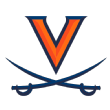
Like spiritual brethren Wisconsin, Virginia doesn't occupy the same talent tier as most of its elite competition, typically (though not always) preferring to find and develop low-top-100 players specifically suited to Tony Bennett's system. This approach doesn't exactly lend itself to deep acquisition intrigue. It also makes UVa prospectively predictable.
Virginia suffered two big losses in the offseason: Darion Atkins (graduation) and Justin Anderson (NBA). Bennett's pack-line defense -- which ranked No. 1 in adjusted efficiency a season ago, slightly edging that terrifying Kentucky defense -- feels almost self-sustaining, a chestnut oak with deep, sturdy roots. That theory will be tested in Atkins' absence, but it's hard to imagine a roster with Malcolm Brogdon, London Perrantes, Anthony Gill, Mike Tobey and Evan Nolte not being awesome at defense. And being the best defensive team in America is a pretty good place to start.
For more on how the Cavaliers will look this season, check out Virginia's Summer Recruiting Bible![]() .
.
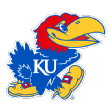
Your thoughts on the 2015-16 Kansas Jayhawks are likely to resemble your thoughts on the 2014-15 Kansas Jayhawks, because the roster is Virginia-esque in its year-over-year similarities. The noteworthy returners -- Perry Ellis, Frank Mason III, Wayne Selden Jr., Devonte' Graham, Sviatoslav Mykhailiuk, Jamari Traylor, Brannen Greene, Landen Lucas, even Hunter Mickelson -- are a roster unto themselves. The differences are freshman-oriented: 2014-15 newcomers Kelly Oubre and Cliff Alexander fulfilled their respective one-and-done aspirations this spring, to varying degrees of success, and three more ESPN 100 prospects are joining up, including top-five power forwards Cheick Diallo and Carlton Bragg.
Self's team began the 2014-15 season with a fair amount of rotation uncertainty, and the Jayhawks never quite put it all together. Injuries, alternating individual slumps, Oubre's slow burn, Alexander's late-season NCAA issues -- there was always some minor disconnection keeping Kansas from reaching its full potential. The Jayhawks won their 11th straight Big 12 title, anyway. They'll be fine.
For more on how the Jayhawks will look this season, check out Kansas' Summer Recruiting Bible![]() .
.

The NCAA tournament, and the Final Four in particular, distorts expectations. For every lasting breakout, there are dozens of players whose star turns prove apocryphal. Grayson Allen does not appear to be one of these players. Sure, Allen's title-game performance was an unforeseen highlight of an otherwise off-and-on freshman season, but when Mike Krzyzewski let Ringo sing -- Ringo being the No. 21-ranked player in the 2014 class, mind you -- he usually acquitted himself well. With Jahlil Okafor, Tyus Jones, Justise Winslow and senior guard Quinn Cook gone, Allen is practically an old head, and he should thrive in the minutes and touches sure to come his way.
Which is not to say the Blue Devils are short on options. Fresh off a thoroughly modern national title run, Krzyzewski's staff poured on another No. 1-ranked recruiting class that just so happened to fill the exact positions -- center (No. 4 Chase Jeter), small forward (No. 1 Brandon Ingram), point guard (No. 3 Derryck Thornton) -- vacated by 2014-15's stars. Rice transfer Sean Obi is likely to rebound well from Day 1, and forwards Marshall Plumlee and Amile Jefferson are still here, too. This team might not have quite the NBA pedigree of its predecessor, but it's not far off, either.
For more on how the Blue Devils will look this season, check out Duke's Summer Recruiting Bible![]() .
.
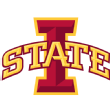
There is no such thing as an emotional replacement for Fred Hoiberg. (Assuming, of course, that Marcus Fizer was unavailable.) The June departure of a beloved coach/alumni/folk hero is an athletic director's Room 101. But Iowa State AD Jamie Pollard had a plan. Shortly after Hoiberg confirmed the worst-kept secret in basketball, Pollard hired Steve Prohm, whose 2014-15 Murray State team reads like an ISU pitchbook. It played fast, spaced the floor, shot well, didn't commit turnovers, scored a bunch of points and didn't play great defense. Sound like anyone you know?
Coaching transitions are always a challenge, this one more than most. But with Prohm on board there's no reason to believe Iowa State -- led by Georges Niang, retaining most of a very good 2014-15 team, adding two obligatory Hoiberg transfers -- won't pick up where the outgoing Mayor left off.
For more on how the Cyclones will look this season, check out Iowa State's Summer Recruiting Bible![]() .
.

Oklahoma existed ever so slightly under the radar for most of last season; it wasn't uncommon to hear people ask how the Sooners could possibly deserve a No. 3-seed. The long answer had to do with top-50 wins and strength of schedule and sundry other RPI-related arcana. The short answer was that Oklahoma was really good. How many rosters have (A) one of the best volume scorers in the country (Buddy Hield), (B) a reliable low-post threat (Ryan Spangler), (C) a lights-out shooter on the wing (Isaiah Cousins), and (D) an elite defense (which allowed the fewest points per trip in the butcher-shop Big 12)? Not many. OU might strain to replace senior forward TaShawn Thomas' rim protection in the early going, but the Sooners have gotten better ever since Lon Kruger arrived. Why would 2015-16 be any different?
For more on how the Sooners will look this season, check out Oklahoma's Summer Recruiting Bible![]() .
.
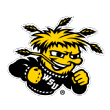
In the spring, there seemed a very real possibility that Gregg Marshall might leave Wichita State. Then Charles Koch went to the family vault to scrounge up a $3 million-per-year contract extension, and that was the end of that.
It was an act of philanthropy, and we're not being sarcastic. Ron Baker and Fred VanVleet, two of the winningest players in college basketball, are both seniors in 2015-16. Watching them finish their careers without Marshall on the sideline would have felt bizarre. Meanwhile, the best backcourt in the country will add Kansas transfer Conner Frankamp at the December break. Cleveland State transfer Anton Grady will go a long way toward replacing Darius Carter on the block. Who knows what the Shockers would have looked like if Marshall had left? Instead, Baker and VanVleet's last shot at this thing is a very realistic one. Thanks, Mr. Koch!
For more on how the Shockers will look this season, check out Wichita State's Summer Recruiting Bible![]() .
.

Back-to-back round-of-32 NCAA tournament losses are a tough pill to swallow under any circumstances; having an average seed of 1.5 in those losses is just brutal. Fortunately for Villanova, the Wildcats are officially back where they've been for most of Jay Wright's tenure: among the national elite.
Such status confers privileges, among them the ability to lose lifeblood seniors such as JayVaughn Pinkston and Darrun Hilliard (as well as graduate transfer Dylan Ennis) without expecting a major step back. The Wildcats not only return starters Ryan Arcidiacono, Daniel Ochefu and Josh Hart, but reserves Kris Jenkins and Phil Booth are primed for much larger roles. Incoming freshman Jalen Brunson is the nation's No. 2-ranked point guard, and if he's as good as scouts think, the Wildcats will have plenty of opportunity to avenge the heartbreak of the past two postseasons.
For more on how the Wildcats will look this season, check out Villanova's Summer Recruiting Bible![]() .
.
11. Gonzaga Bulldogs

On last week's ESPNU College Basketball Podcast, Mark Few called his frontcourt the best in the country, and it's hard to argue. Kyle Wiltjer emerged from his post-Kentucky transfer year with a lights-out perimeter jumper and a more polished post game, the combination of which made him basically unguardable. Przemek Karnowski is a monster whose size belies his finesse. Domantas Sabonis is one of the nation's best, and edgiest, rebounders. The question, of course, is whether the best frontcourt in the country will still be the best frontcourt in the country without seniors Kevin Pangos and Gary Bell running the show out top? Sophomore Josh Perkins is a talented replacement, but the Zags' offense might shine a little less brightly in the exchange.
For more on how the Bulldogs will look this season, check out Gonzaga's Summer Recruiting Bible![]() .
.
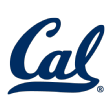
My colleague Jeff Goodman raised a valid point in his look at the top 25 in late June: What will Cuonzo Martin do with his rotation? Thanks to an unforeseen spring coup, when Martin convinced elite wing Jaylen Brown to come play alongside elite power forward Ivan Rabb, the Bears are long on perimeter talent and short on bigs. Word is a local hoops outfit recently experienced some success with unconventionally small lineups. That might be worth investigating. If Rabb can play "center" and Brown can defend bigger fours on the block, Cal might just be the most entertaining team in the country.
In any case, the Bears went 18-15 last season. The fact that we're thinking about how Martin will build his rotation around two NBA prospects is crazy. But here we are.
For more on how the Golden Bears will look this season, check out Cal's Summer Recruiting Bible![]() .
.
13. Utah Utes

Delon Wright was college basketball's best all-around player. He blocked shots, created steals, avoided fouls, drew fouls, made shots, dished assists and rarely turned the ball over. He won a gaggle of awards. He led Utah to the Sweet 16 two years after it went 15-18. We can't say it enough: Dude was awesome. And now he's gone.
Yet Larry Krystkowiak still has three lights-out senior guards (Jordan Loveridge, Brandon Taylor, Dakarai Tucker), a future lottery pick for a sophomore center (Jakob Poeltl), a 6-foot-8 former top-100 prospect (Brekkott Chapman) who shot 44 percent from 3 in reserve minutes last season and a host of budding talents (Isaiah Wright, Kyle Kuzma, juco guard Lorenzo Bonam) filling in on the margins. The more we think about this team, the more convinced we are of its ability to weather Wright's departure. Given where the program was even two seasons ago -- to say nothing of the desiccated husk Krystkowiak inherited in 2011 -- that's quite the statement indeed.
For more on how the Utes will look this season, check out Utah's Summer Recruiting Bible![]() .
.
14. Indiana Hoosiers

Maryland is the Big Ten's runaway favorite, but the competition will be slightly more fierce than what Wisconsin experienced a season ago. (The vast majority of the Big Ten season was played before March, which is why Michigan State didn't go 18-0.) Indiana is atop that second tier. The Hoosiers are bringing almost all of their considerable offensive firepower back, from guards Yogi Ferrell, James Blackmon Jr. and Robert Johnson, to rim-running four Troy Williams, to the coterie of floor-spacing sharpshooters (Nick Zeisloft, Collin Hartman) that often made Indiana one of the nation's most watchable teams. Adding No. 6-ranked freshman center Thomas Bryant should mean better interior defense and rebounding, which isn't saying much, given how bad IU was on that end of the floor last season. But, man, can they put the ball in the bucket.
For more on how the Hoosiers will look this season, check out Indiana's Summer Recruiting Bible![]() .
.
15. Arizona Wildcats
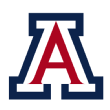
Save Kentucky, no program in the country lost more this spring than Arizona. Sean Miller said happy trails to four starters, spread across four classes, comprising talent, experience, leadership and elite defense. You name it, he's losing it. The good news? Miller has amassed a hoard of talent in recent years, and the reserves of a year (or two) ago -- Gabe York, Elliott Pitts, Parker Jackson-Cartwright, Dusan Ristic -- are ready for much larger roles. Boston College transfer Ryan Anderson is an excellent interior scorer. And the 2015 class, led by five-star shooting guard Allonzo Trier, will add skill, depth and lineup flexibility. Don't expect another 33-win machine, but don't count on a collapse, either.
For more on how the Wildcats will look this season, check out Arizona's Summer Recruiting Bible![]() .
.
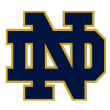
The 2014-15 season was undoubtedly Notre Dame's best under Mike Brey. That's a compliment any way you slice it, because the Irish have almost always been good under Brey, especially recently; in the past nine seasons, the Irish missed the NCAA tournament twice. Which is why, for all of the highs of 2014-15 (an ACC conference tournament title and deep NCAA tournament run chief among them) it is almost impossible to imagine an ND team with Zach Auguste, Demetrius Jackson and Steve Vasturia suffering too much of a comedown, even with heart-and-soul stars Jerian Grant and Pat Connaughton off to the NBA.
For more on how the Fighting Irish will look this season, check out Notre Dame's Summer Recruiting Bible![]() .
.
17. Baylor Bears
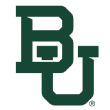
Baylor's entire prospectus revolves around guard play, or the potential lack thereof. Rico Gathers will still be the sport's most ferocious rebounder, and Taurean Prince will still be a reliable high-volume scorer with excellent range at his size. But Kenny Chery and Royce O'Neale were the other half of Baylor's "rebound and find an open shooter" offense, and they're both gone. That will, at a minimum, challenge senior Lester Medford to not only manage more possessions but squander fewer of them to turnovers in the process. Integrating freshman shooting guard King McClure -- whom you might remember from such films as "The Verdict Was Mail Fraud" and "The President's Neck is Missing" -- should help.
For more on how the Bears will look this season, check out Baylor's Summer Recruiting Bible![]() .
.

Extend a warm top 25 welcome to Vanderbilt, the 2015 offseason's best illustration of the power of perspective.
The Commodores weren't remotely on our radar in April or May, mostly because they weren't on our radar in February, or March, after a 1-7 SEC start (and an 9-9 overall conference record) made the rest of their season easy to disregard. The wider shot is far more flattering: From Feb. 3 on -- when we were fixated on bubble teams and top-eight heavyweights -- Kevin Stallings' team finished 10-4. The schedule got easier, sure, but the 'Dores got better, too, as three freshmen starters (Riley LaChance, Wade Baldwin IV, Matthew Fisher-Davis), 38 percent-or-higher 3-point shooters to a man, found their grooves. Center Damian Jones wowed scouts at the Nike Skills Academy) in June, but he was an interior workhorse/rim protector (and NBA prospect) already. Luke Kornet is 7-foot-1 and shot 40 percent from 3! Who knew?! By the end of the season, Vanderbilt ranked 36th in adjusted efficiency. No, seriously! We missed it in April, but it's all true, and it all points toward an unmissable season ahead.
For more on how the Commodores will look this season, check out Vanderbilt's Summer Recruiting Bible![]() .
.

Juwan Staten overshadowed most of his West Virginia teammates in 2013-14 for two reasons: (1) He churned out 18 points, six assists, six rebounds and 1.2 steals in 37 minutes per game and (2) WVU finished 17-16. That made it easy to overlook Eron Harris' scoring growth as a sophomore, when he averaged 17 points and made 42 percent of his 211 3-point shots. Now a Spartan, Harris could be a force when he finally gets back on the court this fall (he spent 2014-15 on a transfer redshirt), but he will need to stay out of (more) trouble in the meantime. Freshman Deyonta Davis should slot in for Branden Dawson almost immediately, and Denzel Valentine is still around. This isn't an overwhelming squad -- it looked far stronger before Caleb Swanigan decommitted in May -- but it's better than you think.
For more on how the Spartans will look this season, check out Michigan State's Summer Recruiting Bible![]() .
.
20. West Virginia Mountaineers

Your most vivid memory of the 2014-15 Mountaineers is almost certainly their final game, when Kentucky embarrassed the Mountaineers in a 78-39 Sweet 16 win. That was bad. The rest of the season, though, was pretty great! Not only did Bob Huggins get back to the NCAA tournament after a couple of ugly seasons, he did so by completely breaking with his longtime style. The result forced opponents into turnovers on 28 percent of their possessions. It also highlighted a backcourt that was, suddenly, much more than Staten. Much of that group will be better next season. Forward Devin Williams will still be a force on the boards. Besides, as a rule, any Huggins-coached team with a bitter taste in its mouth is a thing to be reckoned with. This qualifies. You've been warned.
For more on how the Mountaineers will look this season, check out West Virginia's Summer Recruiting Bible![]() .
.
21. SMU Mustangs

The Mustangs didn't end their 2014-15 season on a particularly high note, but a flubbed measure is forgivable when the rest of the symphony is so good -- the symphony, in this case, being the end of a 22-year March drought. This should have been a good-vibes kind of offseason. Then last week happened. Not only might coach Larry Brown face suspension, but Keith Frazier's return -- which was one of the make-or-break "ifs" of SMU's 2015-16 -- looks less likely than ever. Harsh.
For more on how the Mustangs will look this season, check out SMU's Summer Recruiting Bible![]() .
.
22. LSU Tigers
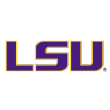
This is a pure wait-and-see call. Talent-wise, the Tigers are going to be tough to match. But with so few established frontcourt players in the fold, and so much hinging on how No. 1 overall prospect (and current projected 2016 No. 1 overall pick) Ben Simmons meshes with fellow blue-chippers Antonio Blakeney and Brandon Sampson, it's anyone's guess how Johnny Jones will turn this on-paper talent into on-court results.
For more on how the Tigers will look this season, check out LSU's Summer Recruiting Bible![]() .
.
23. Butler Bulldogs

Kameron Woods grabbed 27.5 percent of available defensive rebounds for the Bulldogs last season; he was one of the best glass-protectors in the country for a defense that did its best work in that category. If rising sophomore Tyler Wideman can pick up at least some of that slack, Butler should thrive, because its backcourt -- a healthy Roosevelt Jones, elite shooter Kellen Dunham and NC State transfer Tyler Lewis -- might be one of the nation's best.
For more on how the Bulldogs will look this season, check out Butler's Summer Recruiting Bible![]() .
.

Wisconsin earned a respectful top-25 inclusion in April, because, duh, it's Wisconsin. Assuming it won't be at least top-25-good -- even after losing Frank Kaminsky, Sam Dekker and swaths of a team that went to back-to-back Final Fours -- just seems silly. Besides, Nigel Hayes and Bronson Koenig are still here, and so is Bo Ryan, whose 2015-16 will double as a farewell tour. This is not a bold prediction.
For more on how the Badgers will look this season, check out Wisconsin's Summer Recruiting Bible![]() .
.
25. Texas A&M Aggies
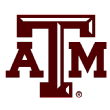
The Aggies have never quite found their footing under fourth-year coach Billy Kennedy, but things are looking up for Year 5. Not only will A&M have an enticing blend of experience (three senior returners, most notably Danuel House) and freshmen (the No. 6-ranked recruiting class in 2015), two of his top three newcomers, center Tyler Davis and small forward D.J. Hogg, were both high school and AAU teammates in Texas. Welcome Week should be a breeze.
For more on how the Aggies will look this season, check out Texas A&M's Summer Recruiting Bible![]() .
.
